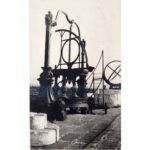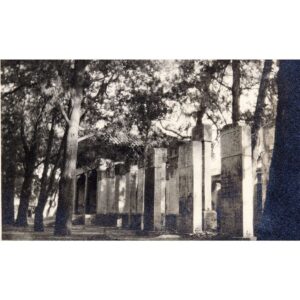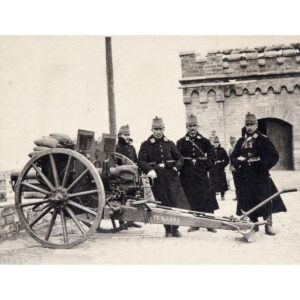Photography Detail of a Dragon from the Ancient Beijing Observatory
A black-and-white photograph showing a detail of the armillary sphere stand in the old Beijing Observatory Gu Guanxiangtai 北京古觀像台. All the instruments are adorned with extremely rich decorations, especially the imperial dragon with clouds. This motif can be seen up close in this photo. A similar motif is found on all the structures used by the emperor at the Forbidden City (Gugong 故宫 or Zijincheng 紫禁城) and the Temple of Heaven (Tiantan 天壇). The instruments, which can still be seen in the museum at the same site, were mostly made by the Jesuits in the 17th and 18th centuries.
The Old Beijing Observatory is one of the few observatories from the period before the invention of the telescope that have survived to the present day. The site covers 10,000 square metres with a main brick platform measuring 40 by 40 metres and 15 metres high. Today, the observatory is a museum open to the public. It was built during the reign of Emperor Kangxi 康熙 (reigned 1661–1722) ... more
A black-and-white photograph showing a detail of the armillary sphere stand in the old Beijing Observatory Gu Guanxiangtai 北京古觀像台. All the instruments are adorned with extremely rich decorations, especially the imperial dragon with clouds. This motif can be seen up close in this photo. A similar motif is found on all the structures used by the emperor at the Forbidden City (Gugong 故宫 or Zijincheng 紫禁城) and the Temple of Heaven (Tiantan 天壇). The instruments, which can still be seen in the museum at the same site, were mostly made by the Jesuits in the 17th and 18th centuries.
The Old Beijing Observatory is one of the few observatories from the period before the invention of the telescope that have survived to the present day. The site covers 10,000 square metres with a main brick platform measuring 40 by 40 metres and 15 metres high. Today, the observatory is a museum open to the public. It was built during the reign of Emperor Kangxi 康熙 (reigned 1661–1722) – on the foundations of a 12th-century precursor. Renovations were carried out under the supervision of Flemish Jesuit and missionary Father Ferdinand Verbiest (1623–1688). In 1900 the observatory was looted by the French invaders, but in 1902 the instruments were returned “to their place”. In 1956 the observatory became a museum.
The photograph is the 170th of 449 photographs of Beijing and its surroundings in the album of Ivan Skušek Jr., purchased during his stay in Beijing (1914–1920). In the handwritten inventory of the album, the photograph is referred to as Sternwarte: Ständer des Mond-Kalenders. (DZ, MV)





































Do you have a comment or additional information about the subject?